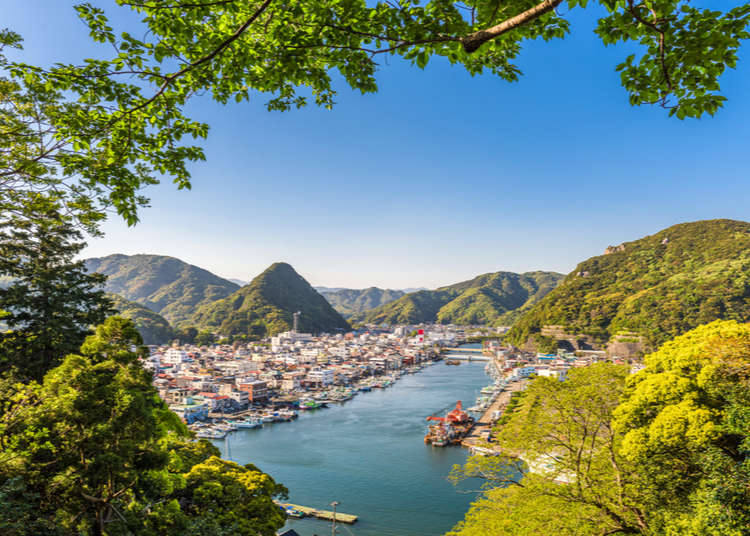
Avoiding the Crowds: Check Out These 10 ‘Undertouristed’ Areas Near Tokyo!
- Written by: David McElhinney
As wonderful as Tokyo can be, sometimes it’s nice to escape the crowds and explore the less-charted areas nearby. These 10 spots are our favorite hidden gems!
Tokyo may be one of the primary reasons you pack your bags and head for Japan, but just beyond the Japanese capital there are plenty of hidden gems just waiting to be explored. And they're a great way to avoid crowds while staying close to Tokyo, too.
From the mountains of Okutama and depths of Saitama Prefecture to the quiet onsen getaways and the startlingly beautiful seaside towns of Kanagawa, here are 10 of the best ‘undertouristed’ destinations near Tokyo.
1. Kumagaya (Saitama)
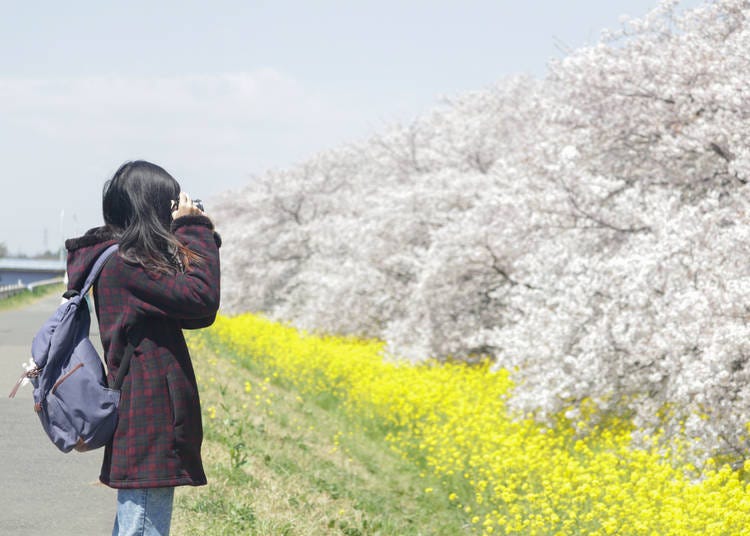
Why Kumagaya?
Outside of Japan, Kumagaya is a little-known city, but it’s one of the major urban centers in Saitama Prefecture. It’s only an hour from Tokyo by train, and offers a nice mix of cultural activities to keep you occupied.
What can you do there?
In sporting circles Kumagaya is renowned as one of Japan’s rugby strongholds; the Kumagaya Rugby ground is home to table-topping club Panasonic Wild Knights, and is a fantastic place to watch a sport that captured the hearts of the nation in 2019.
The Menuma Shodenzan temple is a wonderful piece of spiritual architecture from the Azuchi-Momoyama Period. To go with its gold-trimmed roof is an intricate tapestry of carvings depicting scenes from history and folklore etched into its exterior walls.
And along Kumagaya’s Motoara River is one of Japan’s finest stretches of cherry blossoms. With over 700 individual trees, it resembles the famous sakura of Nakameguro but without the massive crowds.
How to get to Kumagaya
From Ueno Station in north Tokyo to Kumagaya Station is only 30 minutes on the Joetsu Shinkansen.
-

-
Address
3-105 Tsukuba, Kumagaya-shi, Saitama, 360-0037
View Map -
Nearest Station
Kumagaya Station (Joetsu Shinkansen Line / Hokuriku Shinkansen Line / JR Shonan Shinjuku Line / JR Takasaki Line / JR Ueno Tokyo Line / Chichibu Railway)
1 minute on foot
-
Address
3-105 Tsukuba, Kumagaya-shi, Saitama, 360-0037
2. Okutama (Tokyo)
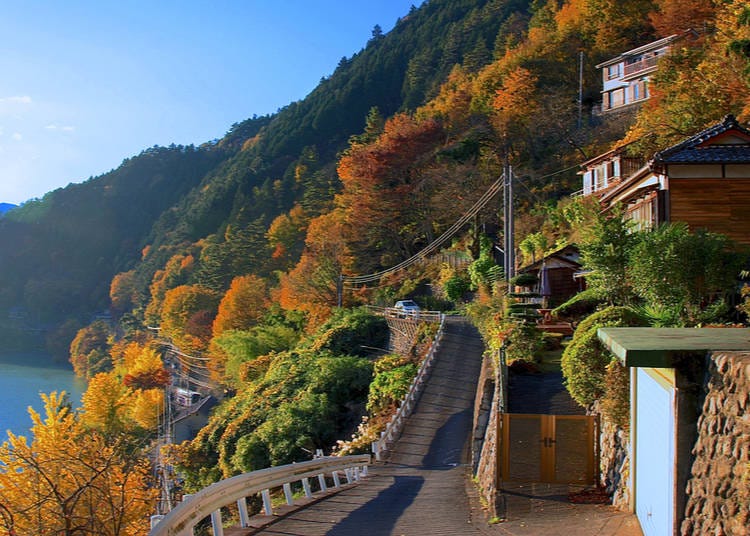
Why Okutama?
Right on the western outskirts of Tokyo Prefecture, the mountainous Okutama region feels far from the tourist hordes of central Tokyo. Given that it’s located within the limits of the capital prefecture, it’s easily accessible via public transport from the city center, and can even work as a day trip if you don’t have time for an overnight.
What can you do there?
A haven for campers and trekkers, Okutama is home to various peaks from which you can catch epic sights of Mount Fuji, such as Mount Kawanoriyama and Mount Nokogiri. The highest of the lot however is Mount Kumotori, which poses a bit of a challenge at over 2,000m tall.
The Mitake hiking trail and Hatonosu Valley are great walking spots close to civilization, where you can marvel at the views with all the conveniences of shops and restaurants nearby. And if camping is your thing, check out the Hikawa Camping Ground set in a towering ravine near Okutama Station. Definitely a good spot to get back to nature and avoid the crowds of Tokyo.
How to get to Okutama
Direct trains go from Shinjuku Station to Tachikawa Station. From here you can transfer to the Ome Line which goes to Okutama Station. The one-way trip is about 1 hour 30 minutes.
-

-
Address
Hikawa, Okutama-machi, Nishitama-gun, Tokyo, 198-0212
View Map -
Nearest Station
Okutama Station (JR Ome Line)
-
Address
Hikawa, Okutama-machi, Nishitama-gun, Tokyo, 198-0212
3. Ichinomiya (Chiba)
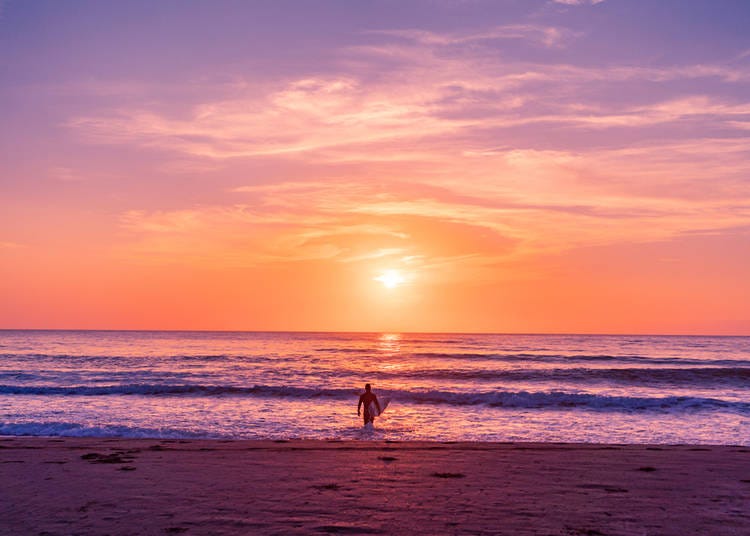
Why Ichinomiya?
Chiba typically slides under the tourism radar, but Ichinomiya is set to throw it into the limelight in 2021 when it functions as the location of the surfing events at the Tokyo Olympics. Outside of its world class waves and summer beach vibes, Ichinomiya is a cool little town still relatively unexplored by foreign tourists.
What can you do there?
Surfing. And not just any old surfing, but a beach that frequently greets Olympic-quality waves, called Tsurigasaki. Though if you're new to watersports, don’t be put off. At Kujukuri beach, a 60-plus-kilometer stretch of sandy coastline near Ichinomiya, you’ll find waves that are more palatable for first-timers. There are also opportunities to get involved in other water sports, such as kitesurfing and sea kayaking.
The town is also filled with nice restaurants and temples. Plus, its small size facilitates seeing it by bicycle, and you can rent these near the beach.
How to get to Ichinomiya
From Tokyo Station to Kazusa-Ichinomiya Station, it’s around 1 hour 20 minutes on the Wakashio Limited Express.
-

-
Address
Ichinomiya, Ichinomiya-machi, Chosei-gun, Chiba 10000, 299-4301
View Map -
Nearest Station
Kazusa-Ichinomiya Station (JR Sotobo Line)
- Phone Number 0475-42-6411
-
Address
Ichinomiya, Ichinomiya-machi, Chosei-gun, Chiba 10000, 299-4301
4. Odawara (Kanagawa)
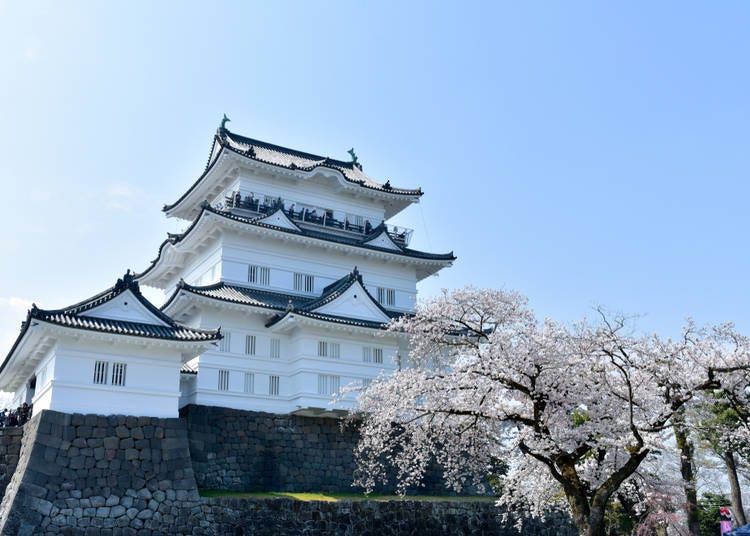
Why Odawara?
Odawara is home to Tokyo’s closest feudal castle around 50 miles away. And its location on the Sagami Bay coastline makes it a great spot for Japanese seafood, or a stroll along the shores of the Pacific.
What can you do there?
You can’t go to Odawara without visiting the eponymous castle. Originally built in the 15th century, the castle played a pivotal role in bringing the fraught Sengoku (Warring States) era of Japanese history to a close, when it was sacked by the armies of Toyotomi Hideyoshi. The main hall is a multi-tiered structure of white stone and sloping tile roofs which visitors can walk to the top of. Once there, you are greeted with fine views of the ocean to the east and the surrounding countryside to the west. No bustling crowds here!
There’s also an early morning fish market at Hayakawa harbor nearby. While it’s not as visitor-friendly as the likes of Toyosu, you can still check it out if you don’t mind the early wake-up call. And at the very least, you can sample its catch at any of Odawara’s plentiful sushi restaurants. For art buffs, there’s a fantastic museum just outside the city, the Enoura Observatory, for which tickets must be booked in advance.
How to get to Odawara
From Shinjuku Station to Odawara Station on the Odakyu Line, it’s only 1 hour 15 minutes.
-

-
Address
6-1, Jonai, Odawara-shi, Kanagawa, 250-0014
View Map -
Nearest Station
Odawara Station (Tokaido Shinkansen Line / JR Tokaido Main Line / JR Shonan Shinjuku Line / JR Ueno Tokyo Line / Odakyu Odawara Line / Hakone Tozan Railway / Izuhakone Railway Daiyuzan Line)
10 minutes on foot
- Phone Number 0465-23-1373
-
Address
6-1, Jonai, Odawara-shi, Kanagawa, 250-0014
5. Miura Peninsula (Kanagawa)
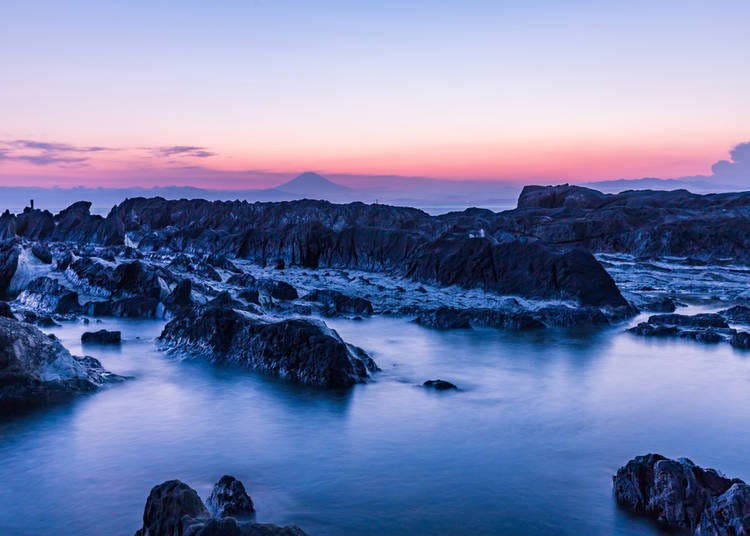
Why Miura Peninsula?
Lying on the south coast of Kanagawa, not too far from Yokohama, is the Miura Peninsula. It’s one of the quieter areas within the grasp of the Tokyo metropolis, and is home to some truly gorgeous scenery.
What can you do there?
Three lighthouses of cultural and historic significance rise from the peninsula’s headlands: Kannonzaki, Tsurugisaki and Jogashima. Not long after the 1858 Anglo-Japanese Treaty of Amity and Commerce, western-style lighthouses began to rise from Japanese shores. The Tsurugisaki Lighthouse, located on the peninsula’s southernmost eastern tip, was one of the first to be erected; it was first lit in 1871. From any of the three however, you’ll be greeted with vast and stunning seascapes.
The Miura Kaigan Beach is also a great spot for a bit of R&R. A fireworks festival also takes place here in August, with over 3,000 explosives coloring the night sky. And like all coastal areas of Japan, the seafood is not to be missed. Tuna and Mackerel are both local favorites which can be sampled in Miura Peninsula’s plentiful restaurants, or at the twice monthly Waiwai-ichi market.
How to get to Miura Peninsula
From Shinagawa Station in south Tokyo, take the Keikyu Main Line to Miurakaigan Station. The trip is 1 hour 15 minutes.
-

-
Address
Minamishitauramachikamimiyada, Miura-shi, Kanagawa, 238-0101
View Map -
Nearest Station
Miurakaigan Station (Keikyu Kurihama Line)
5 minutes on foot
- Phone Number 046-888-0588
-
Address
Minamishitauramachikamimiyada, Miura-shi, Kanagawa, 238-0101
6. Chichibu (Saitama)
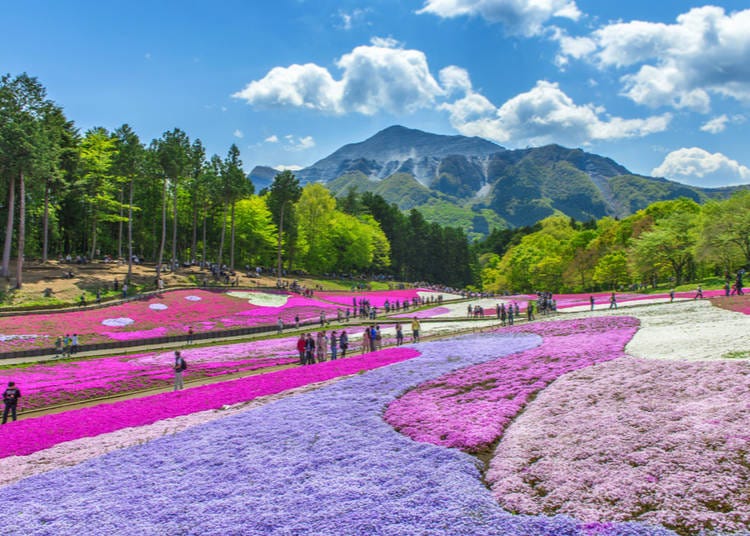
Why Chichibu?
The Chichibu area is primarily known for the eponymous Chichibu Kannon Pilgrimage trail, which guides travelers past 34 Buddhist temples built along the mountain range. Starting in what is now the city of Chichbu with the relatively humble Shimabu-ji temple, the route has been revered among pilgrims since the 13th century.
What can you do there?
Of course there are plenty of temples for you to see. Kinsho-ji, also located in Chichibu City, is one of the finest, with hundreds of statues dedicated to the goddess Kannon. Japan is also one of the world’s great flowering nations, and Chichibu’s Hitsujiyama Park is a fine example of this, with a riot of blossoming flowers decorating the park in various colors throughout spring and summer.
The Chichibu-Tama-Kai Park reaches over the border from Saitama to Tokyo. But on the Saitama side, you’ll find Mount Mitsumine and Lake Chichibu, which make for great walks in nature. For whisky lovers, be sure to end your day with a blend of Ichiro’s Malt from the local Chichibu Distillery. Most bars and restaurants in the area will have some in stock.
How to get to Chichibu
From Ikebukuro Station in west-central Tokyo, take the Ikebukuro Line Express to Han-No Station, then transfer to the Seibu-Chichibu Line for Seibu-Chichibu Station. Total journey is around 1 hour 50 minutes.
-

-
Address
Chichibu-shi, Saitama Banba 1-3, 368-0041
View Map -
Nearest Station
Chichibu Station (Chichibu Railway)
3 minutes on foot
- Phone Number 0494-22-0262
-
Address
Chichibu-shi, Saitama Banba 1-3, 368-0041
7. Shimoda (Shizuoka)

Why Shimoda?
A picture-perfect beach town on the south coast of the Izu Peninsula, Shimoda is a great place to get away from the fast-paced demands of city life. Plus, it played an important role in Japan’s political history.
After over 200 years of national isolation (when there was a severe limitation on trade and relations between other countries), several of Matthew Calbraith Perry’s US naval ships landed on the beaches of Shimoda in 1854. His arrival paved the way for Japan’s unprecedented integration with western society, and an easing of Japanese-foreign tensions which culminated in the Convention of Kanagawa later that year.
What can you do there?
The arrival of Perry’s “black ships” is still commemorated in Shimoda today, in the form of Perry Street, which provides a nice walk through the town, and monuments in Shimoda Park. What most visitors come to Shimoda for however, is Shirahama beach. It’s a great spot for swimming, surfing, sun-bathing, or simply admiring the lone torii gate built on top of a stone eminence overlooking the beach.
How to get to Shimoda
Admittedly, Shimoda isn’t the easiest day trip from Tokyo, so a one- or two-night stay is recommended. From Tokyo Station, take the Tokaido Shinkansen to Atami Station, before switching to the Ito line towards Ito Station. From here, you’ll need to switch again to the Izukyuko Line toward Izukyu-Shimoda Station. The journey will take around 2 hours and 30 minutes.
8. Minakami (Gunma)
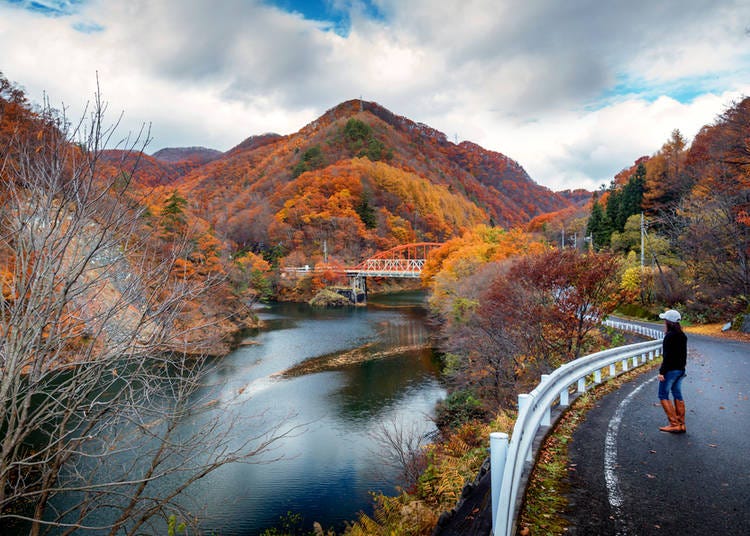
Why Minakami?
Minakami is a small mountain town in Gunma whose aesthetic drastically changes throughout the seasons. Whether it’s the rusty hills of fall, the snowy peaks brooding over the frigid town in winter, the arrival of the cherry blossoms in spring, or the feral greenery of summer, there’s never a bad time to head for Minakami. If that wasn’t enough, its a geothermal hotbed with plenty of onsen and ryokan (Japanese inns) with hot spring facilities.
What can you do there?
You should definitely stay in a ryokan in Minakami. Most will have hot spring facilities on site, either public or private, which are also known as ‘rotenburo’ - outdoor bathtubs. You’ll most likely be treated to a kaiseki dinner in the local ryokan, a multi-course seasonal meal. You should wash it down with some of Gunma’s local nihonshu (rice wine).
Minakami is a great place to just relax and enjoy the gorgeous scenery that surrounds you. If you’re more of a thrill-seeker however, the town is a great spot for watersports in the summer, such as whitewater rafting on the Tone River. In winter, ski resorts open on the nearby slopes, including the Minakami Kogen Ski Resort - which is comparatively cheaper than the more popular resorts across Japan.
How to get to Minakami
Minakami is a little further from Tokyo, and thus works better as an overnight trip. Take the Joetsu Shinkansen from Ueno Station in north Tokyo to Takasaki Station, then switch to the JR Joetsu Line for Minakami Station. The total trip is usually just over 2 hours.
-

-
Address
379-1721 Fujiwara3839-1, Minakami-Machi, Tone-Gun, Gumma-Ken, 379-1721
View Map -
Nearest Station
Yubiso Station (JR Joetsu Line)
24 minutes by car
- Phone Number 0278-75-2557
-
Address
379-1721 Fujiwara3839-1, Minakami-Machi, Tone-Gun, Gumma-Ken, 379-1721
9. Nagatoro (Saitama)
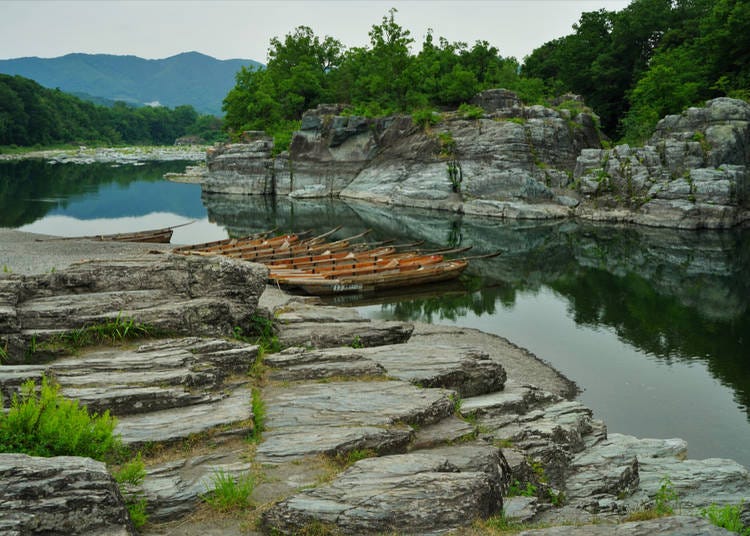
Why Nagatoro?
Lying at the foot of Mount Hodosan and banking the river of the same name as the town, is Nagatoro, a small settlement in Saitama just to the west of Kumagaya. It’s a place of stunning scenery, charming ryokan and various riverboat activities.
What can you do there?
Nagatoro is a small place and easy to explore on foot. But if you want to break more of a sweat, you can hike Mount Hodosan, which stands sentinel over the town, and get far-reaching views of the Saitama countryside for your troubles.
By day, boat trips are available on the Nagatoro River, whether it's a leisurely cruise by paddle boat (operated by someone else), or taking matters into your own hands with some high-octane rafting. By night, head for one the ryokan in the area, where you’ll be treated to local multi-coursed cuisine, and of course, some tasty Japanese liquor.
How to get to Nagatoro
From Ueno Station in north Tokyo, travel to Kumagaya Station on the Joetsu Shinkansen, then change to the Chichibun Main Line for Nogami Station - this is a five-minute walk from Nagatoro. The total journey is around 1 hour 40 minutes.
-

-
Address
529-1, Nagatoro, Nagatoro-machi, Chichibu-gun, Saitama, 369-1305
View Map -
Nearest Station
Nagatoro Station (Chichibu Railway)
1 minute on foot
- Phone Number 0494-66-3311
-
Address
529-1, Nagatoro, Nagatoro-machi, Chichibu-gun, Saitama, 369-1305
-

-
Address
Nagatoro, Nagatoro-machi, Chichibu-gun, Saitama, 369-1305
View Map -
Nearest Station
Nagatoro Station (Chichibu Railway)
5 minutes on foot
- Phone Number 0494-66-0307
-
Address
Nagatoro, Nagatoro-machi, Chichibu-gun, Saitama, 369-1305
10. Tanzawa Mountains (Kanagawa)
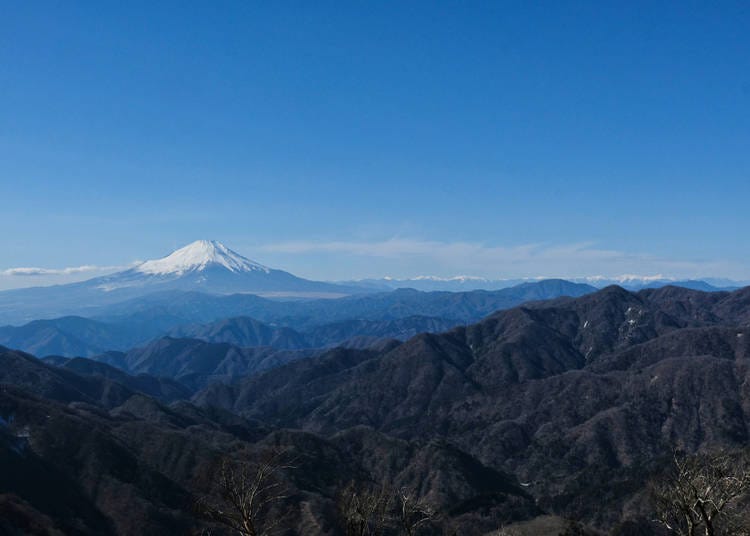
Why Tanzawa Mountains?
Located in Kanagawa Prefecture and bordering Yamanashi and Shizuoka Prefectures is the expansive Tanzawa Mountain Range, home to some of the best and highest peaks in the Kanto region. Given its location just south of the capital, access is very easy from both Tokyo and Yokohama.
What can you do there?
Hike, hike, hike. Mount Oyama is a sacred peak, and one of the most accessible hikes in the range. The Oyama Afuri Shrine located atop a set of grand stone steps along the trail is thought to be well over 2,000-years-old. Be sure to eat some Oyama tofu, made with fresh water from the mountain's natural springs, while you’re here.
For something a little more challenging, head for Mount Hirugatake, which grants epic views of Fuji from the top. This can be done as part of two-day hike, also traversing the slopes of Mount Tanzawa and staying the night in Miyama-sanso mountain hut located on Tanzawa’s summit. High-season is typically November through May, so you can head during the summer to avoid the crowds; though expect things to get pretty hot up there!
How to get to Tanzawa Mountains
There are obviously lots of different places from which you can start hiking. But Hon-Atsugi, an area located at the foot of the range is around 1 hour from Shinjuku Station on the Odakyu Line.
Related Articles
David is a Northern Irish freelance writer living in Tokyo. He loves living in Japan, reading about Japan, writing about Japan and eating Japanese food. He also spends a lot of time exercising, playing rugby and risking a litany of muscle-related injuries in yoga class.
- Area
- Category
*Prices and options mentioned are subject to change.
*Unless stated otherwise, all prices include tax.
Recommended places for you
-

Hachiji juppun mae – A Japanese phrase that even Japanese people can’t agree on the meaning of
-

'Is It Really Clean If...' 10 Things That Shocked an American Woman About Japan
-

Stay with Snorlax? Grand Hyatt Tokyo's Summer Pokémon Resort Experience Is the Ultimate Sleepover
-
Ad

Lapoppo Farm, one of Japan's leading makers of sweet potato treats! An in-depth guide to the secrets behind its popularity, including best-selling products and facilities!
-

Police to ticket cyclists riding on sidewalks, which amounts to almost all cyclists in Japan
-

'They Do What in the Toilet?!' Italians Shocked By These Japanese Beauty Quirks
by: Yuu Sato
Inspiration for Accommodations
-

Enjoy Mt. Fuji from the Comfort of Your Room! Recommended Ryokan with Mt. Fuji View
-

Stay Near the Cherry Blossoms! Hotels for Cherry Blossom Viewing in Tokyo
-

Family-Friendly Hotels with Free Shuttle to Disneyland: Convenient Access for a Magical Stay
-

Top Ranked Hakone Hotels with Mt. Fuji View: Enjoy Stunning Scenery from Your Private Space
-

Convenient Tokyo Hotels with Airport Shuttle: Ideal for Families and Heavy Luggage
-

Stunning Tokyo Tower View Hotels: Enjoy Spectacular Scenery from Your Private Space
-

Convenient Asakusa Hotels with Kitchens: Ideal for Extended Family Visits
-

Experience Luxury: Hakone's 10 Best Five-Star Accommodations
-

Enjoy Mt. Fuji Autumn Leaves! Top Hotels Near the Popular Autumn Leaves Corridor
-

Experience Hakone Fall Foliage from Your Room with Stunning Views
-

Exploring Tokyo: 4 Must-Visit Spots around Tokyo Station
-

Day Hiking Near Tokyo: 6 Easy Hikes You Can Do While Visiting Japan
-

Spending Wonderful Time Alone in Shibuya - Free Cosmetics and a Hundred-Yen Bus!
-

Explore, Eat, Relax - Welcome to the World of Onsen Gastronomy! Travel Japan's countryside, expand your culinary horizons, and soak in sumptuous hot springs
-

Healthcare in Japan for Tourists: What to Do When You Get Sick or Injured in Japan
-

JR Edition: Visit all of Tokyo in one Day with the Tokyo Metropolitan District Pass!
- #best ramen tokyo
- #what to buy in ameyoko
- #what to bring to japan
- #new years in tokyo
- #best izakaya shinjuku
- #things to do tokyo
- #japanese nail trends
- #what to do in odaiba
- #onsen tattoo friendly tokyo
- #daiso
- #best sushi ginza
- #japanese convenience store snacks
- #best yakiniku shibuya
- #japanese fashion culture
- #best japanese soft drinks






















